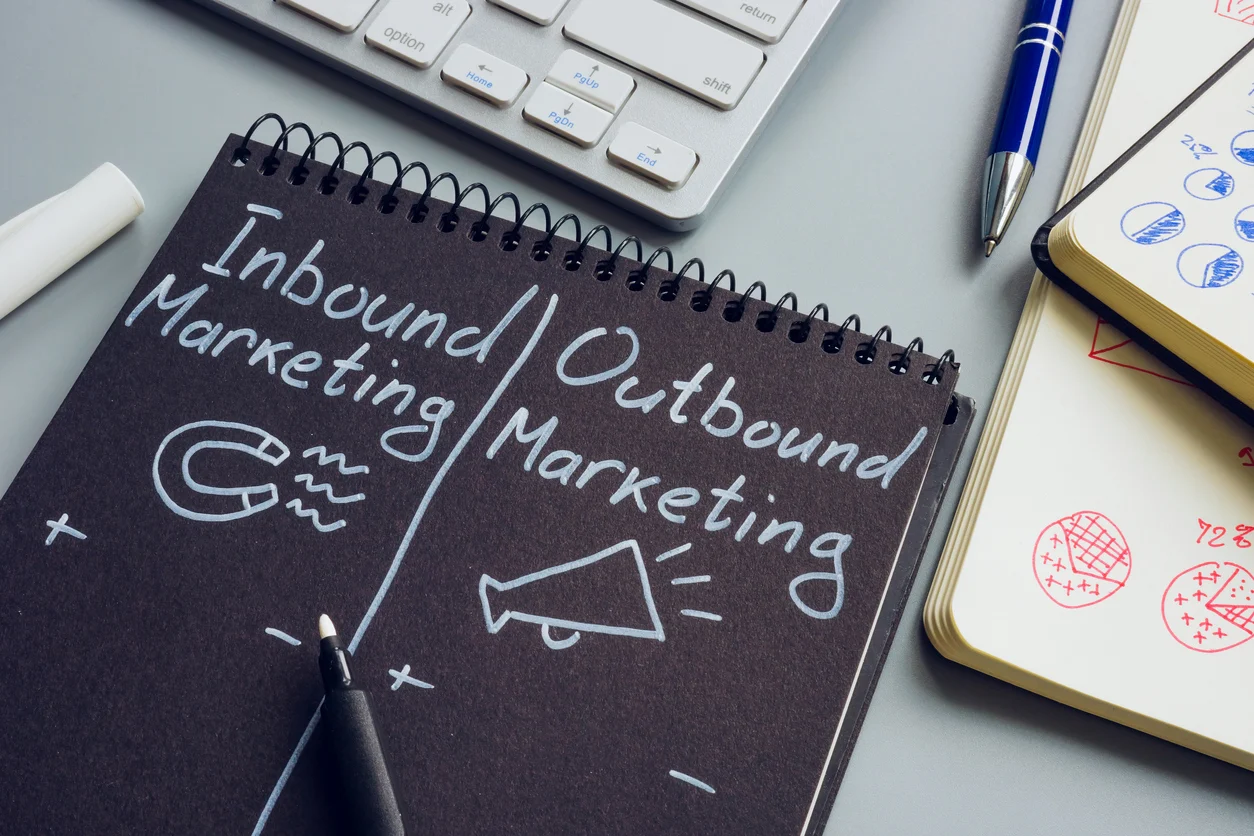
Today’s consumers actively research before they buy. Traditional marketing methods like cold calls, billboards, radio ads, and print ads are less effective. Businesses need new strategies to attract customers.
This article explores two approaches: inbound marketing, which focuses on attracting customers with valuable content, and outbound marketing, which involves directly reaching out to a broad audience. By understanding both methods, you can choose the right approach to achieve sustainable marketing success.
Table of Contents
Definitions
Inbound Marketing is a strategic approach to attracting customers by creating high-quality content, establishing thought leadership, and fostering meaningful interactions with your target audience.
Outbound Marketing is a traditional marketing approach where businesses actively reach out to a broad audience to generate leads, often using methods like cold calling, email blasts, and print advertising.
What is Inbound Marketing?
Instead of chasing after potential customers, inbound marketing focuses on attracting them through valuable content and building long-lasting relationships.
This approach acknowledges the fact that today’s consumers are actively researching solutions online before making a purchase decision. By providing informative and engaging content that addresses their needs and interests, businesses can position themselves as trusted resources and establish a strong brand presence.
The core philosophy behind inbound marketing is simple: provide value first, sell second. By offering high-quality content that educates, entertains, or solves problems for your target audience, you establish yourself as a trusted resource and build trust with potential customers. When they’re ready to make a purchase decision, your brand will be at the forefront of their mind.
Understanding Your Audience: The Buyer Persona
The success of any inbound marketing strategy hinges on a deep understanding of your target audience. Here’s where the concept of a buyer persona comes in. A buyer persona is a fictional representation of your ideal customer, encompassing their demographics, challenges, pain points, goals, and preferred information sources.
By developing detailed buyer personas, you can tailor your content and marketing messages to resonate specifically with the needs and interests of your target audience. This targeted approach ensures your content reaches the right people at the right time, increasing the likelihood of lead generation and conversion.
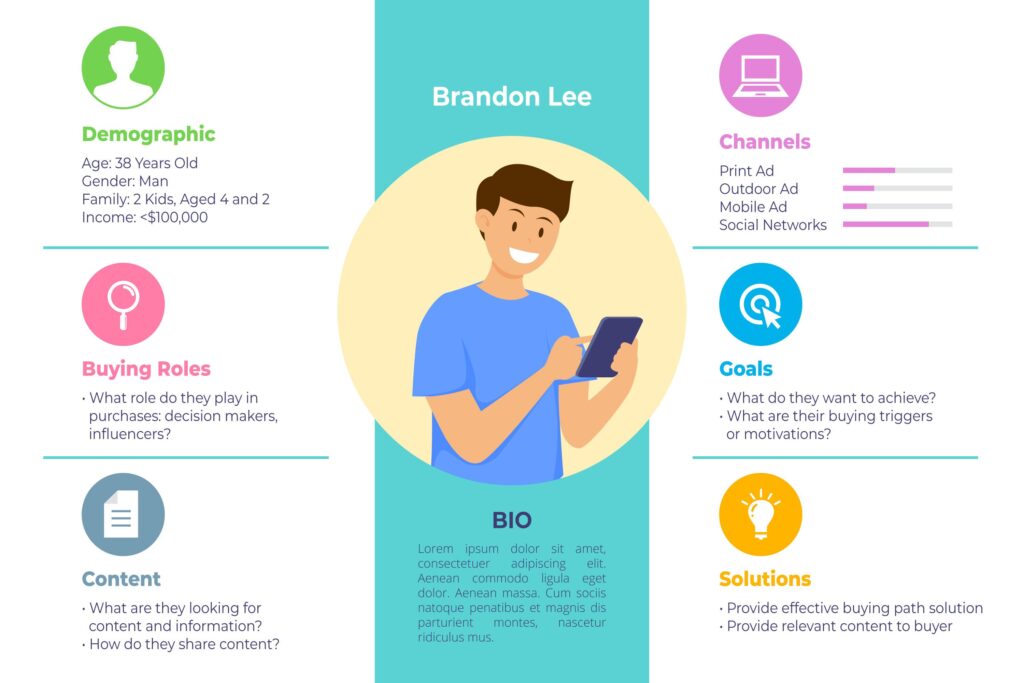
Inbound Marketing Strategies
Content Marketing
Content marketing is the foundation of any successful inbound marketing strategy. It involves creating and distributing high-quality content that educates, entertains, and inspires your target audience. Here are some key considerations:
Content Formats
- Blog Posts: Articles that address specific topics relevant to your audience’s needs and interests.
- Ebooks and White Papers: In-depth guides that offer valuable insights on topics relevant to your industry.
- Videos: Engaging video content can explain complex topics, showcase product features, or offer customer testimonials.
- Infographics: Visually appealing summaries of data or complex concepts.
- Case Studies: Real-world examples of how your product or service has helped other businesses.
SEO (Search Engine Optimization)
Ensure your content is discoverable in search engine results pages (SERPs) by implementing SEO best practices. This includes keyword research, on-page optimization (using relevant keywords in your content and website structure), and link building (acquiring backlinks from reputable websites).
Social Media Marketing
Social media platforms offer a powerful way to connect with your target audience, share your content, and foster brand awareness. An effective inbound social media strategy goes beyond simply broadcasting messages.
First, creating engaging content is essential. Share content that resonates with your audience on the platforms where they spend their time. This could include industry news, behind-the-scenes glimpses, or interactive polls.
Build relationships by responding to comments and messages promptly, participate in relevant conversations, and use social media listening tools to understand your audience’s needs.
Cultivate a vibrant online community around your brand on social media platforms. Encourage interaction, user-generated content, and discussions relevant to your industry.
For example, the Glossier social media team is really good at getting people involved and finding photos and videos that customers share every day. They ask fans to post pictures of themselves using Glossier products with hashtags like #GlossierIRL on Twitter and #GlossierGirl on Instagram.
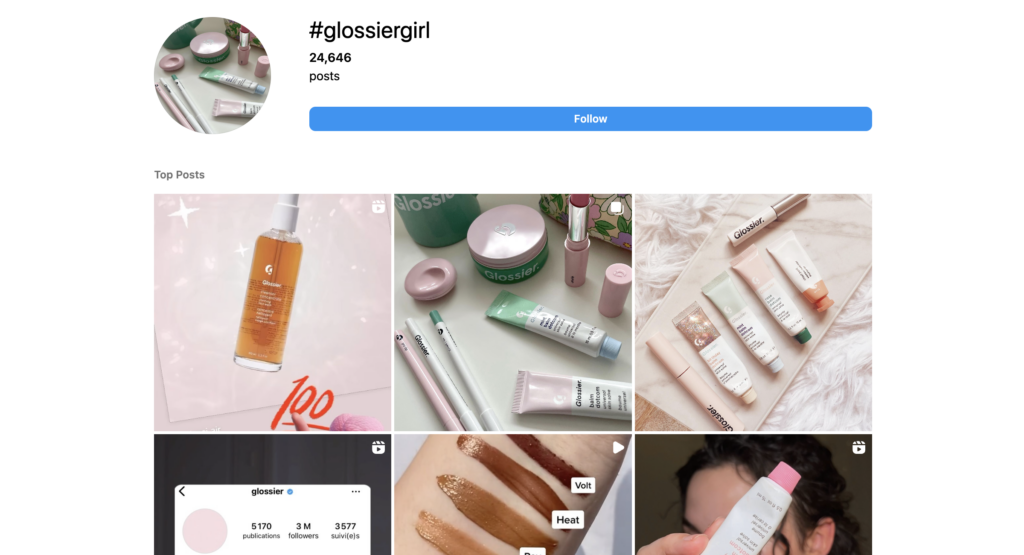
Email Marketing
Email marketing remains a highly effective tool for nurturing leads and converting them into customers. To integrate email marketing into your inbound strategy, focus on building an email list. Offer valuable content (e-books, white papers, webinars) in exchange for email addresses to build a targeted email list.
Segment your audience based on demographics and interests for more targeted and personalized email campaigns. Lastly, craft compelling email content that provides value to your subscribers and encourages them to learn more about your offerings.
Benefits of Inbound Marketing
Quality Leads
Inbound marketing benefits businesses by attracting high-quality leads through valuable content and personalized experiences. These leads are more likely to convert due to their genuine interest.
Inbound tactics focus on creating engaging content that addresses the target audience’s pain points, resulting in immediate results in terms of lead generation and customer acquisition.
Intent to Buy
One of the key benefits of inbound marketing is that it targets individuals who have already shown an interest in the products or services offered. This intent-driven approach increases the likelihood of turning leads into customers.
By providing relevant and valuable content, businesses can nurture leads effectively, guiding them through the sales funnel with a higher chance of conversion.
Nurturing Long-Term Relationships
Inbound marketing fosters long-term relationships with your audience. Through engaging content and interactive experiences, you cultivate ongoing communication with potential customers.
This two-way dialogue allows you to understand their needs better, address their concerns, and nurture them throughout the buyer’s journey, ultimately converting them into loyal customers.
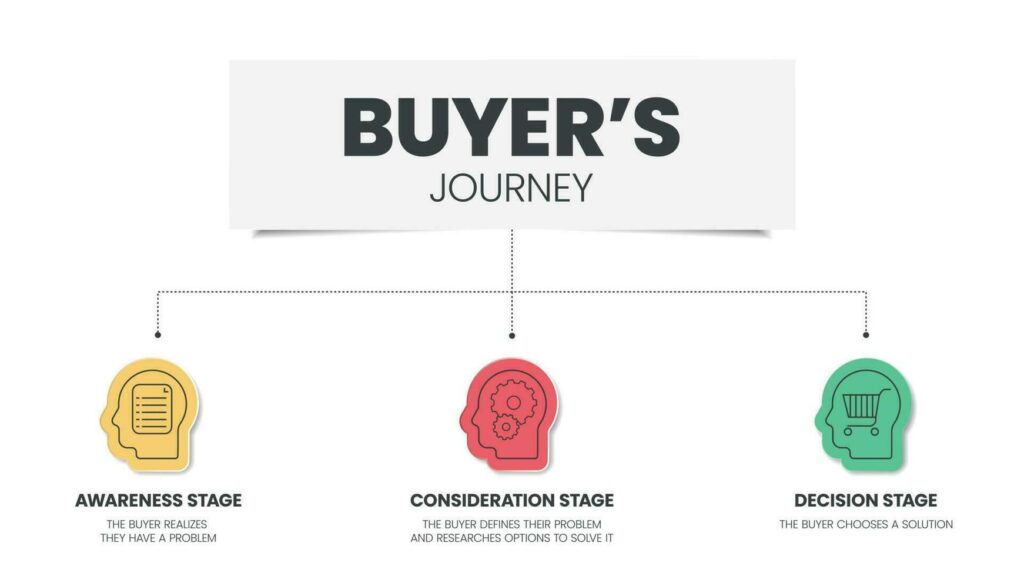
Measurable Results and Improved ROI
Inbound marketing allows you to measure the success of your campaigns with great precision. By analyzing website traffic, lead generation data, and email marketing metrics, you can gain valuable insights into what content resonates most with your audience and optimize your strategy for even better results.
Cost-Effective Marketing Strategy
Strategies like content creation and social media engagement can be implemented with a lower initial investment. Furthermore, the long-term benefits of inbound marketing, such as increased brand loyalty and customer retention, contribute to a greater return on investment (ROI) over time.
Non-Invasive Approach
Compared to outbound marketing strategies such as cold calling or unsolicited emails, inbound marketing takes a more non-invasive approach. It allows businesses to engage with potential customers organically, earning their trust and loyalty over time.
The effectiveness of inbound tactics lies in building relationships with prospects based on mutual benefit rather than interruptive advertising methods.
What is Outbound Marketing?
Outbound marketing operates under the philosophy of pushing messages out to a broad audience in hopes of generating interest. This approach utilizes various tactics to reach potential customers who may not be actively searching for your product or service.
While the effectiveness of outbound marketing has been challenged by the rise of digital technologies and ad blocking, it can still be a successful strategy when used in conjunction with inbound marketing efforts.
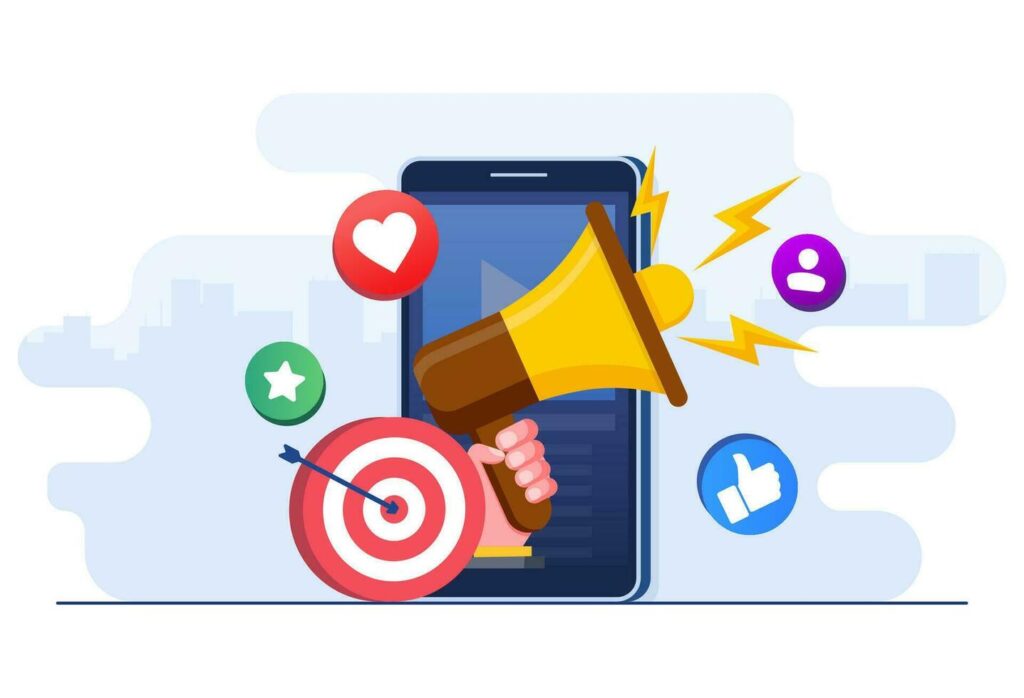
Interruption Marketing
Outbound marketing often relies on the concept of interruption marketing. This involves interrupting a potential customer’s experience (watching TV, reading a magazine, browsing the web) with your marketing message. The goal is to capture their attention and generate interest in your offering.
Although considered intrusive by some, interruption marketing can still be effective in reaching a wide audience and creating brand awareness, especially when targeting specific demographics or industry professionals.
Outbound Marketing Strategies
Cold Calling
Cold calling involves directly contacting potential customers via phone, typically those who haven’t expressed prior interest in your product or service. The salesperson aims to introduce their company, explain the value proposition, and potentially schedule a follow-up meeting.
While cold calling can be effective in generating leads, it can also be perceived as intrusive and often results in low conversion rates.
Email Marketing (Outbound)
Email marketing plays a role in both inbound and outbound marketing strategies. However, outbound email marketing focuses on sending targeted emails to a purchased or rented list of contacts who haven’t necessarily opted-in to receive your communications.
It’s crucial to differentiate between these approaches to ensure compliance with anti-spam regulations and maintain a positive brand image. Outbound email marketing campaigns should prioritize permission-based marketing practices and offer genuine value to the recipient.
Print Advertising
Print advertising, including placements in magazines, newspapers, and brochures, can be an outbound marketing strategy to reach a specific audience. This approach can be effective for targeting demographics who rely heavily on print media for information consumption.
However, the decline of traditional print media and the rise of digital advertising have led to a decrease in the overall effectiveness of this tactic.
Trade Shows and Events
Participating in industry trade shows and events allows businesses to connect with potential customers face-to-face. This approach provides an opportunity to showcase products or services, network with industry professionals, and generate leads.
However, trade shows can be a significant investment, and the effectiveness hinges on a well-developed event marketing strategy to maximize return on investment.

Advantages of Outbound Methods
Rapid Brand Awareness
Outbound marketing excels at quickly reaching a large audience and generating brand awareness. Paid advertising placements, sponsorships, and targeted online campaigns can put your brand in front of a broad spectrum of potential customers, even those who haven’t actively begun their buying journey.
Increased Click-Through Rates and ROI
Outbound strategies have the potential to deliver increased click-through rates and return on investment (ROI). By using data analytics and targeted campaigns, businesses can optimize their outreach efforts for better results.
Reaching Specific Demographics
Outbound marketing strategies can be highly targeted, allowing you to reach specific demographics or industry professionals with laser focus. For example, niche publications, targeted social media advertising, or industry trade shows can connect you with a pre-qualified audience more likely to be interested in your offerings.
Time-Sensitive Promotions and Offers
Outbound marketing excels at promoting time-sensitive offers and events. Targeted email campaigns, social media blasts, or even strategically placed print ads can create a sense of urgency and encourage immediate action from potential customers.
A prime example is Vegemite, one of Australia’s most iconic brands, seized the opportunity when the Queen of Pop visited Down Under. They cleverly displayed a billboard with the tagline “From one icon to another, Welcome to Australia,” a clear nod to Taylor Swift. Placed strategically in Melbourne just before Swift’s Australian tour concerts, it was a simple yet brilliant move to assert their brand presence and evoke smiles. This also demonstrates Vegemite’s awareness of current pop culture trends.

Digital Transformation
With the digital transformation in outbound marketing, businesses can now reach a wider audience through various online channels such as email, social media, and display advertising. This shift has enabled companies to target specific demographics more effectively.
Choosing Your Marketing Path
Now that we’ve delved into the core principles and strategies of both inbound and outbound marketing, let’s compare and contrast these approaches to help you determine which might be the best fit for your business.
Here’s a table outlining the key differences between inbound and outbound marketing approaches:
| Feature | Inbound Marketing | Outbound Marketing |
|---|---|---|
| Target Audience | Existing interest, actively researching solutions | Broad audience, may not be actively searching |
| Cost | Generally lower, focuses on content creation | Can be more expensive, especially for advertising |
| Measurability | Highly measurable through website analytics and marketing tools | Measurable, but may require additional effort to track ROI |
| Lead Quality | Generally higher quality leads, already interested | Lower quality leads, need nurturing for conversion |
| Relationship Building | Focuses on fostering long-term relationships | Less emphasis on relationship building, more on immediate sales |
| Long-Term Sustainability | Sustainable and scalable with ongoing content creation | May require ongoing investment for continued lead generation |
Choosing the Right Approach:
The ideal marketing approach depends on several factors, including your business goals, target audience, budget, and resources. Here are some scenarios where each method might be most effective:
- Inbound Marketing is a Good Choice When:
- You want to attract qualified leads who are already interested in your offerings.
- You have a limited marketing budget and need a cost-effective strategy.
- You want to build long-term relationships with your audience.
- Your target audience actively researches solutions online before making a purchase decision.
- Outbound Marketing is a Good Choice When:
- You need to quickly generate brand awareness and reach a broad audience.
- You have a specific demographic or industry you want to target intensely.
- You have a time-sensitive promotion or event you want to advertise.
- You have the resources to invest in paid advertising or event participation.
Integrated Marketing
The most successful marketing strategies often incorporate elements of both inbound and outbound approaches. This integrated marketing approach leverages the strengths of each method to create a well-rounded marketing plan.
For example, you might utilize inbound content marketing to attract qualified leads and then nurture those leads with targeted outbound email campaigns.
Inbound Marketing Challenges
Content Management
Maintaining shared content in inbound marketing poses a significant challenge. Ensuring that content remains relevant, up-to-date, and engaging for the target audience requires constant monitoring and updates. Without a streamlined process for content management, inconsistencies can arise, leading to confusion among potential customers.
Develop a content calendar to plan and schedule content creation in advance. Utilize content management systems (CMS) to organize and store content efficiently. Invest in content collaboration tools to streamline the editing and approval process. Regularly audit your content and update outdated information to maintain freshness and accuracy.

Time and Effort
Building a successful inbound marketing strategy requires significant time and effort. Crafting compelling content, optimizing SEO, nurturing leads through email campaigns, and analyzing data demand a substantial investment of resources. It’s a continuous process that requires patience and dedication to see results.
Clearly define your goals and target audience to focus your efforts. Prioritize high-impact content creation and utilize content marketing tools to automate aspects of the process. Consider outsourcing specific tasks if resources are limited. Track your results and analyze data to optimize your approach over time.
Technology Investment
Investing in tech tools to support inbound efforts is crucial. Automation platforms, CRM systems, analytics tools, and social media management software streamline processes, enhance efficiency, and provide valuable insights for optimizing campaigns. Without leveraging these technologies, businesses may struggle to execute their inbound marketing strategies effectively.
Research and choose tools that align with your budget and marketing goals. Many marketing platforms offer free trials or tiered plans to accommodate different needs. Start with essential tools and gradually invest in more advanced software as your needs evolve.
Outbound Marketing Challenges
Email and Cold Call Blocking
Outbound marketing faces challenges with email and cold call blocking. Many consumers are increasingly using spam filters and call screening services, making it difficult for outbound messages to reach their intended audience effectively. This results in lower success rates for outbound campaigns.
Focus on building high-quality email lists through permission-based marketing practices. Offer valuable content (e-books, white papers) in exchange for email addresses to ensure your audience is receptive to your messages. Research and refine your cold calling scripts to provide genuine value and address potential customer needs directly.

High Cost and Low Yield
One of the significant hurdles of outbound marketing is the high cost associated with traditional methods like radio ads and commercials. These approaches often require a substantial financial investment but may not always deliver the desired results, leading to a low yield in terms of customer engagement and conversions.
Carefully research and target your outbound marketing efforts to maximize reach within your ideal customer segment. Explore more cost-effective outbound methods like targeted social media advertising or strategic partnerships with complementary businesses. Continuously measure the performance of your campaigns and adjust your approach to optimize results and ROI.
Tracking Difficulties in Lead Generation
Outbound marketing also struggles with tracking marketing metrics and lead generation data. Unlike inbound strategies that offer detailed analytics and insights, outbound methods such as cold emails lack the necessary tools for accurate performance measurement. This makes it challenging for marketers to evaluate the effectiveness of their campaigns.
Utilize marketing automation tools that integrate with your CRM system to track outbound interactions and conversions. Develop a system for tracking responses to cold calls and link them to lead generation metrics. By gaining a clearer picture of campaign performance, you can refine your strategy and improve lead generation efforts.
Final Remarks
The comparison between inbound and outbound marketing strategies reveals distinct approaches to engaging consumers. Understanding the differences, benefits, and challenges of each method is crucial for businesses aiming to enhance their marketing effectiveness. While inbound tactics focus on building relationships and delivering valuable content, outbound methods prioritize reaching a wider audience through more traditional channels.
Choosing the right marketing path involves assessing one’s target audience, budget, and overall business goals. By mastering the keys to better marketing, companies can optimize their strategies for maximum impact. Whether leaning towards inbound or outbound techniques, a balanced approach that integrates the strengths of both can lead to a comprehensive and successful marketing strategy.
Related Article:
The following article may contain the author’s opinions and interpretations of the subject matter. Any of the products, services, or platforms mentioned is not sponsored or affiliated.
Featured Image courtesy of designer491/Getty Images/iStockphoto
